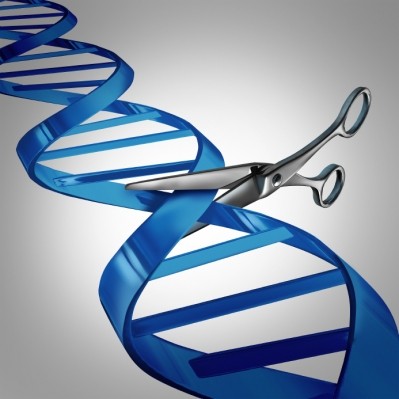GM debate: US review finds no safety or nutritional variance in GM and conventional feed

“The field data sets did not reveal unfavorable or perturbed trends in livestock health and productivity,” said Alison Van Eenennaam, geneticist at the Department of Animal Science at the University of California, writing in the Journal of Animal Science.
The paper, she said, summarized the findings of the hundreds of peer-reviewed articles that have documented the effects of GE (genetically engineered) feed on animal health, and also examined the health trends in the large commercial livestock populations that have been consuming GE feed for well over a decade.
Van Eenennaam told us: “I included all of the studies I could find on the topic and then distilled the weight of evidence based on the findings."
She looked at livestock productivity and health data from publicly available databases from 1983, before the introduction of GE crops in 1996, and subsequently through to 2011, a period with high levels of predominately GE animal feed.
“These data are in agreement with the many peer-reviewed, controlled animal feeding studies that have reported no biologically-relevant difference between the nutritional attributes and safety of feed from GE plants as compared to feed derived from conventional crop varieties," she said.
And other research, said the UC Davis geneticist, has repeatedly shown the milk, meat, and eggs derived from animals that have consumed GE feed are indistinguishable from products derived from animals fed a non-GE diet.
Media sensationalism
Van Eenennaam told feednavigator one of the triggers for her review, published online earlier this month, was the fact that the media has previously sensationalized a few studies suggesting that GM feedstuffs cause health problems in livestock.
“The press tends to focus on single, controversial, and poorly designed outlier studies and does not look at the vast number of studies that are well designed and show no sensational findings,” she said.
She notes the Seralini study on 200 rats has been roundly criticized by the scientific community and regulatory authorities globally.
In the paper, Van Eenennaam concluded:
“A small number of experimental animal feeding studies have generated highly controversial results suggesting deleterious health effects of GE feed.
Some of these reports were published and then retracted (Séralini et al., 2012), although recently and controversially republished without further peer review (Séralini et al., 2014), and others were never subjected to peer review (Ermakova, 2005; Velmirov et al., 2008).
Adverse effects, including high rates of tumorogenesis, sterility, premature mortality, and histopathological abnormalities have been reported.
These studies have been criticized for non-adherence to Organization for Economic Cooperation and Development (OECD) consensus documents and standard protocols.
Methodological flaws variously include the use of control feed that was not derived from near-isogenic lines, insufficient animal numbers to enable appropriate statistical power, lack of dose response or insufficient or no information on natural variations in test parameters, over interpretation of differences that lie within the normal range of variation (i.e., the biological significance of differences is more important than their mere presence), and poor toxicological and/or statistical interpretation of the data.”
New regulations
And she added that these "isolated and poorly designed studies" have resulted in the promulgation of new regulations, including a mandatory 90 day rodent sub chronic toxicity feeding study for all new GE approvals in the EU.
“The media attention devoted to these sensational studies is exacerbating the continued controversy associated with the safety of GE food and feed and is bolstering arguments calling for the mandatory labeling of milk, meat, and eggs from GE-fed animals,” notes the paper.
Anti-GM lobby reacts to review
Claire Robinson of the anti GM campaign group, GM Watch, questioned the type of studies included in the UC Davis review:
“The farm animal studies that are referred to, apart from very few, are not toxicity and health studies but simply feed performance and nutritional studies: that is, do the animals fed on GMOs simply grow as well as those on non-GMO rations over their commercial lifespan? They are not designed to look at the health of the animals including reproductive capability.”
Liz O’Neill, director of GM Freeze, said that whether or not GM feed has an impact on the nutritional profile or the health of the animals that consume it is “largely beside the point.”
“GM farming regimes are designed to allow farmers to employ heavy duty pest control regimes that devastate wildlife and now we are seeing glyphosate resistant weeds crop up all over the place. People want to know how their food is produced so that they can make informed choices and, for many, that includes avoiding GM because they believe the environmental cost of that kind of farming is just too high,” she added.
The UC Davis review was backed by funds from the W K Kellogg endowment and the California Agricultural Experiment Station of the University of California Davis.
Source: Journal of Animal Science
DOI: doi: 10.2527/jas2014-8124
Title: Prevalence and impacts of genetically engineered feedstuffs on livestock populations
Authors: A. L. Van Eenennaam and A. E. Young












